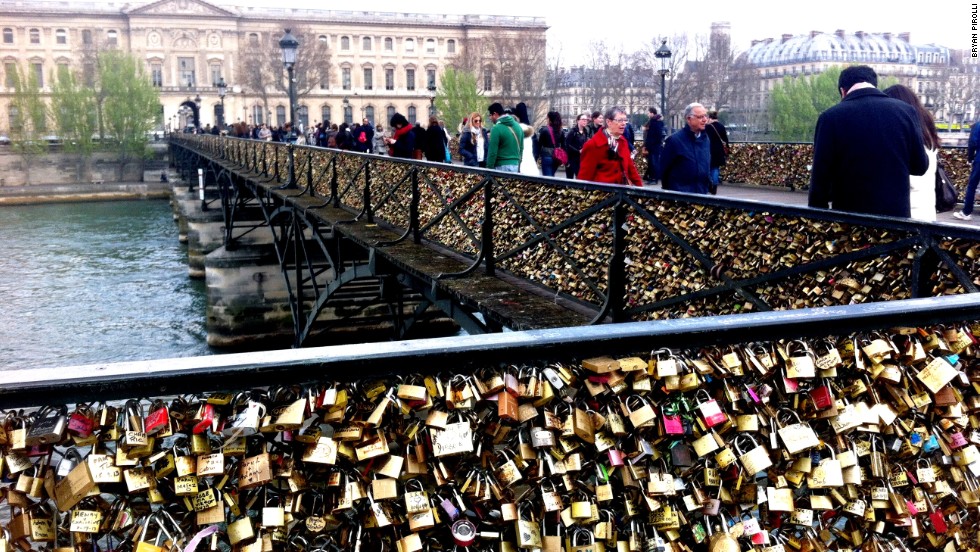Since 2008, the Pont des Arts bridge has been an attraction for couples wishing to follow the seemingly romantic tradition of writing their names on a padlock, attaching it to the railing and throwing the key into the River Seine. Unfortunately, in June of 2014, almost one million love locks overburdened the metal railings of the footbridge, and caused a part of it to collapse, thereby ending the tradition, much to the relief of Parisians. But many of those who come bearing the locks are unaware that this tradition did not begin in Paris. This love story started over 100 years ago, in Serbia, and like so many Shakespeare plays, this one was a tragedy.

PARIS, FRANCE – FEBRUARY 14: A view of the Pont Des Arts on Valentine’s Day on February 14, 2014 in Paris, France. The accumulation of the ‘love locks’, a phenomenon popular in many European cities, where couples attach a lock to symbolise their love to the mesh panels on the sides of the bridge, is starting to pose safety concerns, due to their mass weight. (Photo by Kristy Sparow/Getty Images)
How it All Began
There was once a young school teacher, named Nada, who fell in love with Relja, a Serbian soldier. They would meet at the Most Ljubavi Bridge, committed to each other with an engagement. But before they could get married, Relja was sent to war in Greece, and much to Nada’s dismay, he never returned. He broke off their engagement, explaining that he had fallen in love with a Greek woman, and Nada never saw him again. Nada was devastated and died of a broken heart, while still being young. Though Relja never saw the damage he had caused, the young women from the village watched the poor Nada waste away, and swore that such ruin would never come to their own relationships.
They began writing their names (along with those of their loved ones) on padlocks, attaching them to the railings of the bridge (the same bridge where the former couple used to meet) and throwing the keys into the river. This tradition earned the bridge a new name, “The Bridge of Love”.

This custom died out over time, until a few decades later, when a Serbian poet and writer penned “The Prayer of Love”, a poem which gave the love locks new life, and the Bridge of Love once more began to be filled with padlocks.
The tradition of the love locks didn’t spread until much later, which some credit to an Italian author named Federico Moccia. Moccia wrote the book “I Want You” in 2006, which depicts two young lovers in Rome, who inscribed a lock with both of their names and secured it to the Ponte Milvio, thereby memorializing their love.
Love Locks Today
Now, on bridges all over the world, the love locks have appeared. Although some cities are embracing the custom and even use the sale of the locks to bolster charities, most see them as an eyesore and a hazard.
Paris is one of the latter. After the Pont des Arts railing collapsed, city officials had no choice but to take action. All of the railings, both the fallen and the intact, have been removed and replaced with wooden boards. This is not the most picturesque substitution, but in an effort to beautify them, street artists have been encouraged to add their mark on the panels.
Many have incorporated love locks into their work, as a tribute to the romantic custom. But some feel that this is not art and it has done nothing to improve the view. Their complaints will be short-lived, though, as the wooden “art” panels are a temporary fix. They will be replaced by plexiglass panels in the near future.
The post Paris Love Locks Removed and Replaced with Graffiti appeared first on Locks, keys, doors.